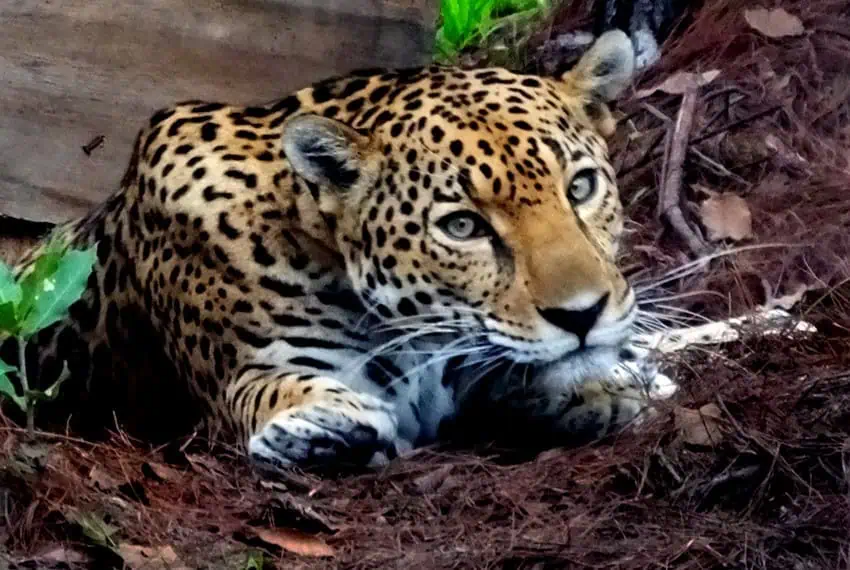A video of a jaguar wandering around the backyard of a home in residential Cancún has gone viral and led authorities to advise the public what to do in case of encounters with potentially dangerous wild felines.
Posted on X on Tuesday, the original video received more than 61,000 views in its first 48 hours and was shared by dozens if not hundreds of accounts.
Vuelven a captar a un Jaguar cerca del Arco Norte en Cancún, el felino estuvo rondando en el patio de una vivienda 🛑👇 pic.twitter.com/pNyy63VLGS
— Quintana Roo Urbano (@cancunurbano) June 11, 2024
What most interested the jaguar most was a container on the patio floor, which the jaguar notices about one minute into the video.
The 151-second video shows the jaguar walking casually, sniffing and exploring the patio of a house in Arco Norte, a relatively modern but still developing area 16 kilometers from the Cancún’s Hotel Zone.
According to local media, sightings of jaguars and other wild animals have become more common in Arco Norte, some of which borders large swathes of jungle. The home appears to be in a rural setting without fences.
The video, taken at night, does not specify its recording date. It shows the jaguar trying to get into a container on the patio floor that’s covered with a thin sheet of metal held in place by two large plastic containers. Unable to achieve his goal, the jaguar eventually moved on.
It is certainly not the first time a jaguar has been spotted in residential areas of the state, Quintana Roo. Eleven months ago, a jaguar was run over near Akumal on Highway 307, between Cancún and Chetumal. Thanks to residents’ quick work, however, authorities were alerted and the animal’s life was saved by a veterinary clinic.
Entities such as the Federal Environmental Protection Agency (Profepa) and the National Alliance for the Conservation of the Jaguar are using the video as an opportunity to remind the public that jaguars are an endangered and protected species. People who harm them are subject to severe penalties under the law.
Tania Fernández Moreno, head of the Ecology office for the municipality of Benito Juárez (which encompasses the city of Cancún and surrounding regions), took the opportunity to warn that human encounters with jaguars can be dangerous.

If a jaguar has to defend its territory or protect its offspring, or feels threatened or cornered, an attack on humans could occur, she said.
She advised against approaching the spotted cat — known in Mexico as “El Jefe” (The Boss), “La Sombra” (The Shadow, based on its stealthy hunting techniques) and “Colmillo Blanco” (White Fang, evoking its powerful bite).
Likewise, Fernández urged area residents to keep their dogs and cats from roaming because jaguars might try to prey on them for food.
“[Jaguar] attacks on humans are extremely rare, [but] they are predators, and they usually hunt prey that is commonly found in their habitat,” Fernández added.
According to Mexico’s most recent government census, from 2018, an estimated 4,800 wild jaguars roam Mexico. Results from a new census being taken from March through June of this year are expected in August.
With reports from Infobae, La Jornada Maya, El Financiero and Milenio
